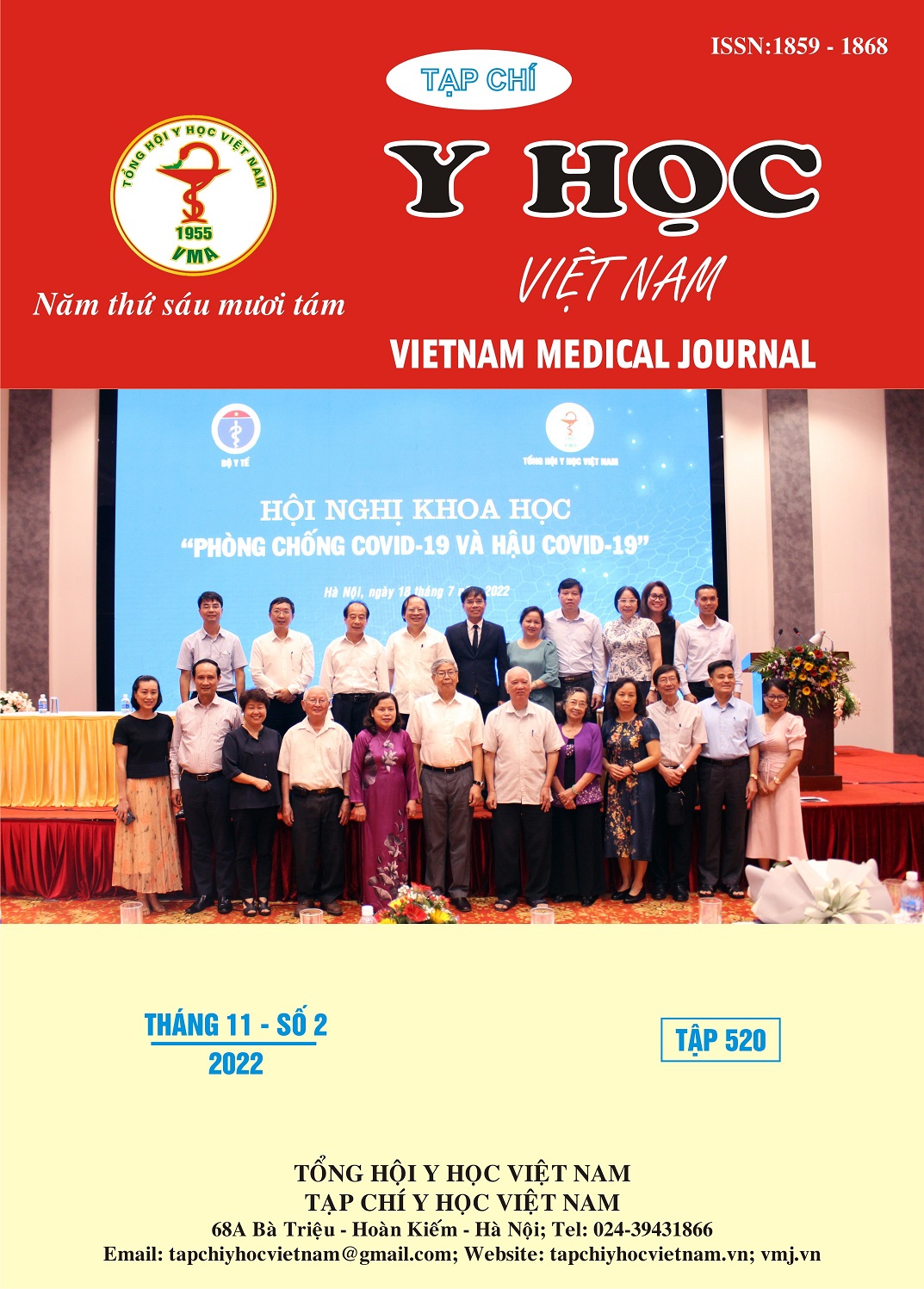THE VALUE OF 1.5 TESLA ABBREVIATED MRI IN THE DIAGNOSIS OF BREAST TUMOR
Main Article Content
Abstract
Objective: To evaluate the role of the 1.5 Tesla abbreviated MRI in the diagnosis of breast cancer. Subjects and methods: The retrospective study was conducted at National Cancer Hospital from January 2019 to October 2022, on 82 patients with suspicious breast lesions, undergoing 1.5 Tesla MRI with 02 protocols: full and abbreviated protocol(integrated), with histopathological results after needle biopsy and/or surgery. The abbreviated protocol performed in the study included axial STIR and axial T1FS sequences before injection, 1 minute, and 2 minutes after injection. MRI images were classified into 2 groups: full and abbreviated protocol, encrypted and blinded patient information. Results were independently evaluated by two experienced radiologists. The imaging, pathologic features, and value of the two methods were analyzed. Results: In 82 patients with suspicious breast lesions, 92 lesions were detected, of which 51 cases were cancer and 41 cases were benign lesions. The lesion detection rate of the abbreviated MRI(AB-MRI) compared with full diagnostic MRI(FD-MRI) was 97.8%. 02 cases were not observed on AB-MRI, accounting for 2.2%, classified as BI-RADS 3 on FD-MRI, and were benign lesions. On the other hand, comparing the ability to classify breast lesions according to BI-RADS on the AB-MRI with FD-MRI, the agreement was very good (Cohen’s Kappa index=0.866). The accuracy, sensitivity, and specificity of AB-MRI (BIRADS≥4) in the diagnosis of breast cancer were 81.5%, 100%, and 55.8%, respectively. Conclusion: Abbreviated MRI is a precious method in the diagnosis of breast cancer, with sensitivity and accuracy equivalent to full diagnostic MRI.
Article Details
Keywords
Cộng hưởng từ tuyến vú, quy trình rút gọn, ung thư tuyến vú.
References
2. Kuhl CK, Schrading S, Strobel K, Schild HH, Hilgers RD, Bieling HB (2014). Abbreviated breast magnetic resonance imaging (MRI): first postcontrast subtracted images and maximum-intensity projection-a novel approach to breast cancer screening with MRI. Journal of clinical oncology : official journal of the American Society of Clinical Oncology, 32(22):2304-10.
3. Mann RM, van Zelst JCM, Vreemann S, Mus RDM (2019). Is Ultrafast or Abbreviated Breast MRI Ready for Prime Time? Current Breast Cancer Reports, 11(1):9-16.
4. Sung H, Ferlay J, Siegel RL, et al (2021). Global Cancer Statistics 2020: GLOBOCAN Estimates of Incidence and Mortality Worldwide for 36 Cancers in 185 Countries. CA: a cancer journal for clinicians, 71(3):209-249.
5. Strahle DA, Pathak DR, Sierra A, Saha S, Strahle C, Devisetty K (2017). Systematic development of an abbreviated protocol for screening breast magnetic resonance imaging. Breast cancer research and treatment, 162(2):283-295.
6. Mango VL, Morris EA, David Dershaw D, et al (2015). Abbreviated protocol for breast MRI: are multiple sequences needed for cancer detection? Eur J Radiol, 84(1):65-70.
7. Moschetta M, Telegrafo M, Rella L, Stabile Ianora AA, Angelelli G (2016). Abbreviated Combined MR Protocol: A New Faster Strategy for Characterizing Breast Lesions. Clinical breast cancer, 16(3):207-11.


